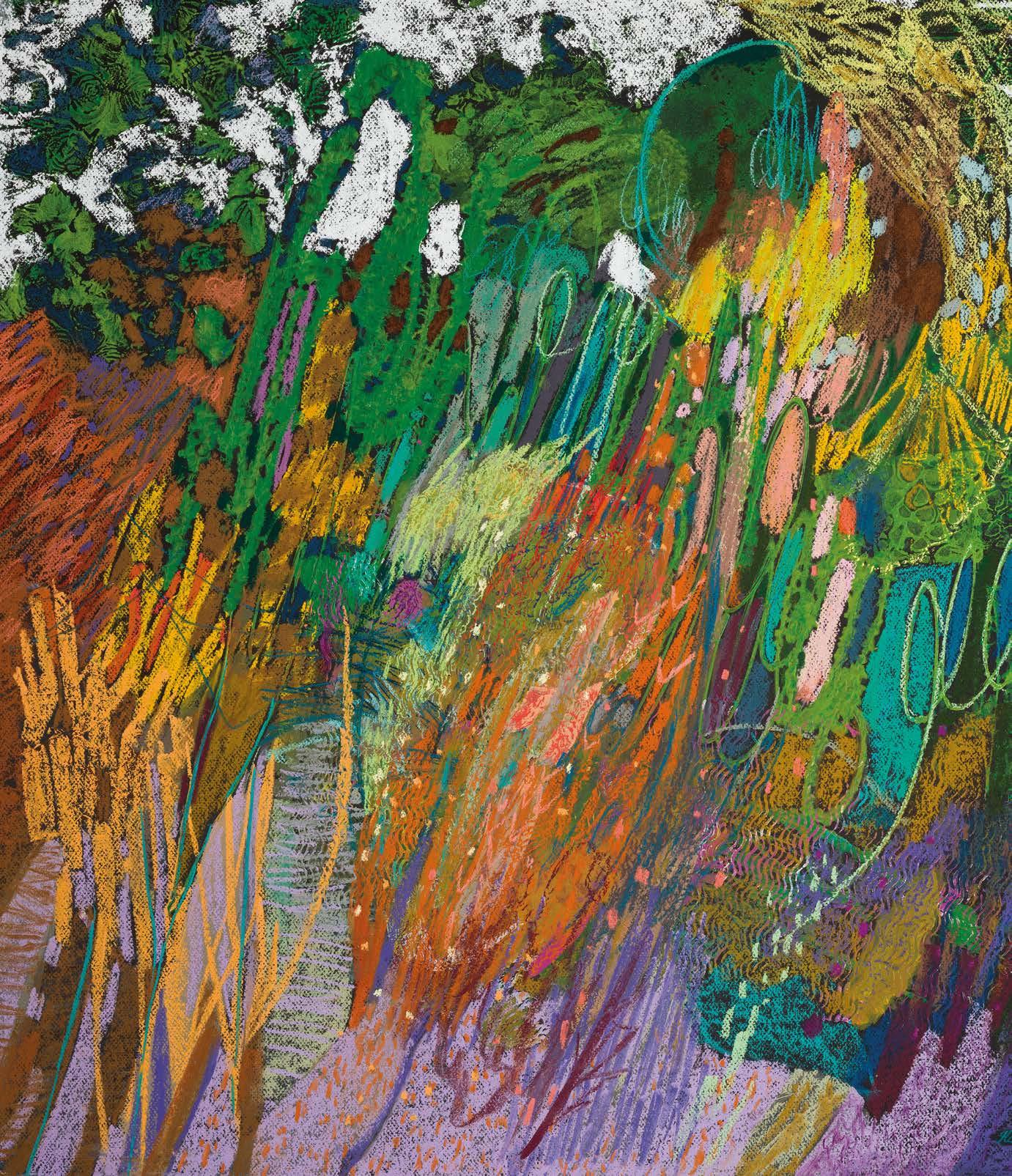
5 minute read
In The Studio
IN THE STUDIO
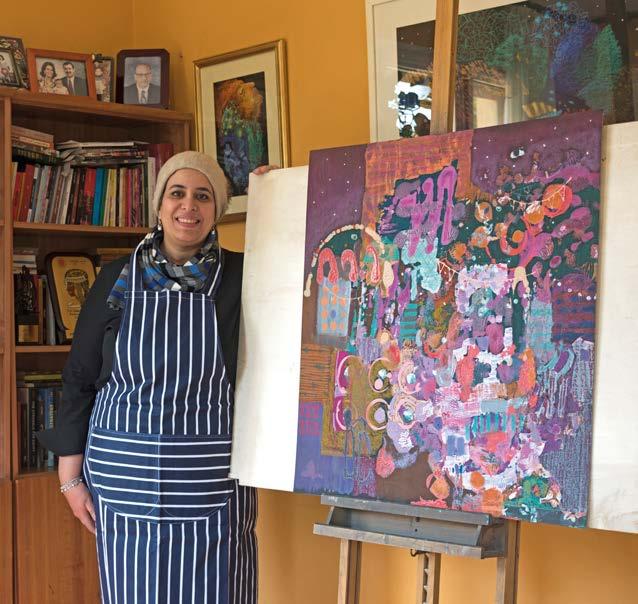
Ha a 2 Shafey The winner of the Artists & Illustrators Award at the Pastel Society’s annual show talks to REBECCA BRADBURY about prompting a pastel renaissance from her home studio in Cairo
Switching careers is never a decision to be taken lightly, especially when trading more than 25 years of experience as a high-fl ying professional for the unpredictable path of an artist. Yet a mid-life occupation switch was a risk that Halla Shafey was willing to take. After a successful career as an economist, she is now a full-time artist – and that gamble has paid dividends. Not only has the Cairobased artist won numerous awards for her wonderfully textured, multicoloured artworks – including the Artists & Illustrators Award at the Pastel Society’s recent annual exhibition for her painting, A Walk in the Fields – but she has also been praised by Egyptian critics for revolutionising the medium.
Firstly, Halla’s art is abstract – a subject that is by no means groundbreaking in the wider art world but is rarely seen among the international pastel community. While most stick to the medium’s realist roots, Halla works spontaneously, responding to observations, emotions and colours.
On top of this, the artist experiments with non-traditional media. Despite protestations from pastel purists, she works over acrylic paints, linocuts and monoprints creating textures so lifelike that some of her paintings look like patchworks of rich fabrics.
Although appearing slightly uneasy with the notion she’s led a pastel rebellion, Halla is clearly not afraid to break the so-called rules – “I am always experimenting with different techniques and trying to push the boundaries of pastel” – and notes how her global success has instigated a renewed interest among Egyptian artists. “Pastel hasn’t been very
1 Halla’s award-winning pastel, A Walk in the Fields
2 Her studio in Cairo is fi lled with books and family photos
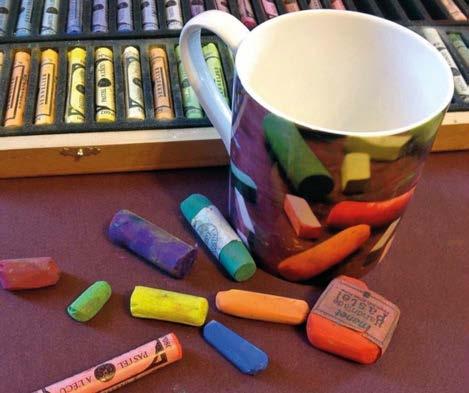
popular in Egypt,” she explains. “There’s defi nitely been a renaissance after people have seen my work and my international exposure.”
Growing up in Egypt, Halla loved painting and drawing as a child, but with no art department at the American University in Cairo, which she fi rst graduated from in 1987, becoming an artist was not on her radar – hence her academic route.
When the artist turned 40, however, she felt an overwhelming urge to be creative again, taking lessons in photography, writing, pottery and, of course, fi ne art. It was while attending the atelier of renowned Egyptian artist Magd El-Sagini, son of the great sculptor Gamal El-Sagini, that she was fi rst introduced to pastel. “I started really falling in love with it,” she recalls. “The reason why, I think, is the immediacy of it. The luminosity of colour is unparalleled.”
While nature has a huge part to play as a source of inspiration for Halla, colour is what she values above all else. Viewers may unearth legions of organic-like shapes within her compositions, but it is the hypnotic combinations of exquisite hues that hook you fi rst. “Colour is the most important thing for me as a person,” she explains. “For me it’s a language. I can’t live without colours. I’m drawn to colours, I express myself in them.”
With no other media quite able to match pastel’s saturation, it seems obvious this self-declared colourist would be drawn to the medium. After those initial workshops, she soon began immersing herself in all things pastel, working hard to develop her own style. In 2012 she was ready to commit to the life of an artist and has been working from her home studio on the outskirts of Cairo ever since. “I have bigger rooms I could use,” she says, “but I don’t like big spaces, I feel lost, so I like to work in a small intimate space.” 3
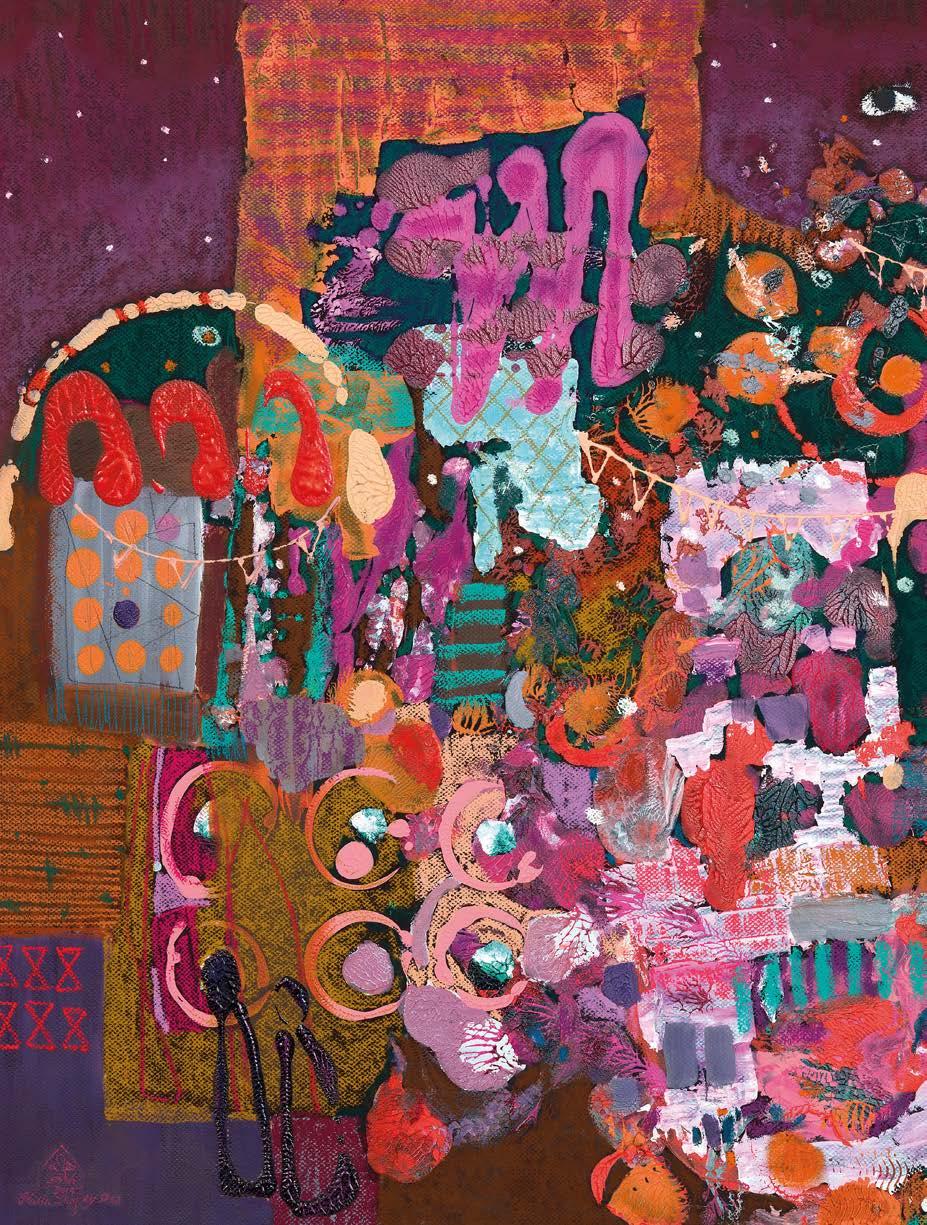
3 This work was shown at Cairo’s Nile Art Gallery in 2020
4 Halla’s love of pastels even extends to her choice of cup!
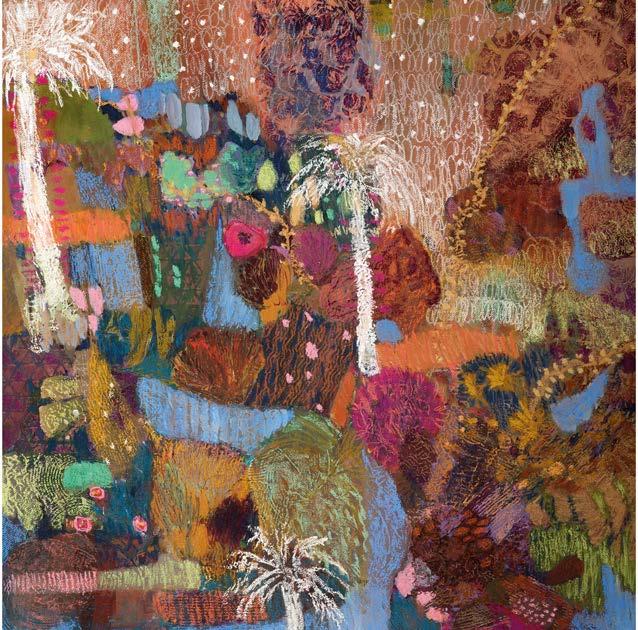
5 Another pastel from her Cosmic Messages show
6 This untitled piece is part of her Rivers of Paradise series
There’s defi nitely a cosiness to Halla’s studio, with orange walls adorned with certifi cates and awards, shelves packed with books, and family photographs dotted about. Beautiful sunlight fl oods in through a huge window and behind her desk are trays brimming with pastels – arranged by colour, not by tone. The French brand La Maison du Pastel probably has the edge, though the artist enjoys collecting pigments from her extensive travels, which have included attending workshops with the Pastel Society of America and our own Pastel Society – and she is now an elected member of both.
A day in the studio begins by turning off her phone. “I don’t like any interruptions, especially when I’m starting to work,” she says. “It needs clarity of mind and a hell of a lot of concentration to get the fi rst thing going. Then it’s easier after that.”
Some of Halla’s paintings begin by throwing colours onto a support; others start out with a printed layer, often linocut or a monoprint. In the example of A Walk in the Fields, acrylic marks were added to a linocut base to create a background of “beautiful, spontaneous and haphazard textures” before the pastel mark making began.
“The painting starts to have an identity of its own, it starts taking you on its own path,” she says of this stage. “Then there’s always a process of stepping back and analysing it, making sure there’s balance.”
From vein-like constellations of ridges to gritty passages of colour to soft, buttery lines of detail, the textures are many and varied. Are they practiced beforehand or do they come spontaneously?
“Both,” Halla replies. “We have to keep ourselves open to happy surprises when we’re working, and we have to be risk takers. I’m a risk-taker – I have nothing to lose, I want each painting to be a completely new experience.”
“I don’t like repeating the same colour palette or repeating the same design. I like diversity, so I give myself a chance to make mistakes,” she adds. “Very important to me is actually enjoying the process of discovering and experimenting.” Settling for the status quo is not an option for Halla.
Over the last decade, she has made artists on both sides of the Atlantic, as well as back home in Egypt, reconsider the role of the pastel painter. “Everybody said you’re crazy, you can’t do that,” she says, recalling the time she told her friends she was starting out as an artist, “but I’ve never looked back.” www.instagram.com/hallashafey 5

6










